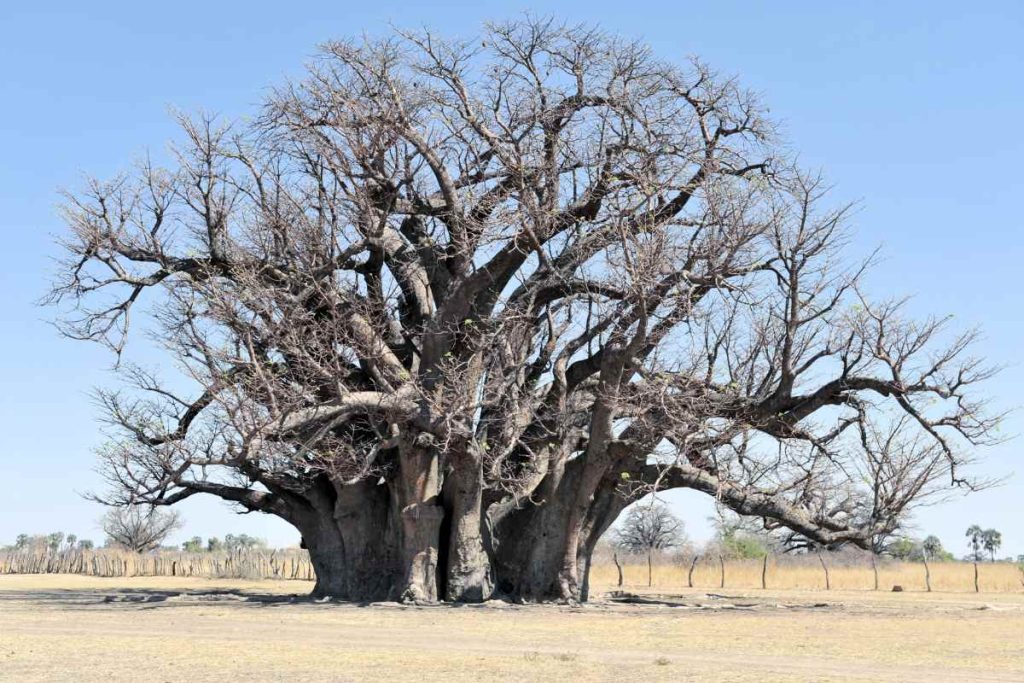The Baobab tree, also known as the “Tree of Life,” is an iconic symbol of Africa. With its massive trunk and unique appearance, it has captured the imagination of people for centuries. The Baobab tree holds great significance in African culture and ecology, playing a vital role in the lives of both humans and wildlife. In this article, we will explore the anatomy of the Baobab tree, its cultural significance, medicinal properties, ecological importance, role in climate change mitigation, fruit, wildlife habitat, threats it faces, and its future.
The Anatomy of the Baobab Tree
The Baobab tree is known for its distinctive features. It has a massive trunk that can reach up to 30 meters in diameter, making it one of the largest trees in the world. The trunk is often hollow, providing shelter for animals and humans alike.
The bark of the Baobab tree is smooth and grayish-brown in color, with a fibrous texture. Its leaves are compound and deciduous, meaning they fall off during the dry season. The flowers of the Baobab tree are large and white, with a sweet scent that attracts pollinators such as bats and moths.
The Cultural Significance of the Baobab Tree

The Baobab tree holds great cultural significance in African traditions. It is considered a sacred tree and is often associated with spiritual practices. In many African communities, the Baobab tree is believed to be the dwelling place of spirits and ancestors. It is also seen as a symbol of strength and resilience.
The Baobab tree is often used as a meeting place for communities, where important decisions are made and stories are shared. Its hollow trunk provides shelter during gatherings and serves as a natural amphitheater.
The Medicinal Properties of the Baobab Tree
The Baobab tree has a long history of medicinal use in Africa. Various parts of the tree, including the bark, leaves, and fruit, are used to treat a wide range of ailments. The bark of the Baobab tree is known for its anti-inflammatory properties and is used to alleviate pain and reduce swelling.
The leaves are rich in antioxidants and are used to boost the immune system and treat respiratory infections. The fruit of the Baobab tree is particularly prized for its high vitamin C content and is used to treat digestive disorders and boost energy levels.
The Ecological Importance of the Baobab Tree
The Baobab tree plays a crucial role in African ecosystems. It is often referred to as a keystone species, meaning it has a disproportionate impact on its environment compared to its abundance. The Baobab tree provides food and shelter for a wide range of wildlife, including elephants, primates, birds, and insects.
Its hollow trunk serves as a nesting site for birds and a refuge for small mammals. The flowers of the Baobab tree attract pollinators, which in turn help to fertilize other plants in the ecosystem. The fallen leaves of the Baobab tree provide nutrients to the soil, enriching it and supporting the growth of other plants.
The Baobab Tree’s Role in Climate Change Mitigation

The Baobab tree has an important role to play in mitigating the effects of climate change. It acts as a carbon sink, absorbing carbon dioxide from the atmosphere and storing it in its massive trunk. This helps to reduce greenhouse gas emissions and slow down global warming.
The Baobab tree is particularly effective at sequestering carbon because of its long lifespan and slow growth rate. It can live for thousands of years and continue to absorb carbon throughout its lifetime. Protecting and preserving Baobab trees is therefore crucial for climate change mitigation efforts.
The Baobab Tree’s Fruit
The fruit of the Baobab tree is highly nutritious and has the potential to become a superfood with global market potential. It is rich in vitamin C, antioxidants, and fiber. The fruit has a tangy flavor and can be consumed fresh or dried. It is often used in traditional African dishes and beverages.
In recent years, there has been growing interest in Baobab fruit as a health food product. It is now being used in a variety of products, including smoothies, energy bars, and supplements. The demand for Baobab fruit is increasing, providing economic opportunities for communities that rely on the tree for their livelihoods.
The Baobab Tree’s Wildlife Habitat
The Baobab tree provides a vital habitat for many endangered species. Elephants, in particular, rely on the Baobab tree for food and shelter. They feed on the leaves, bark, and fruit of the tree, helping to disperse its seeds and promote its regeneration.
Primates, such as baboons and vervet monkeys, also depend on the Baobab tree for food and shelter. The hollow trunks of the tree provide a safe haven for these animals, protecting them from predators and harsh weather conditions. Protecting the Baobab tree is therefore essential for the conservation of these endangered species.
The Threats Facing the Baobab Tree

Despite its cultural and ecological importance, the Baobab tree is facing numerous threats. Deforestation is one of the main challenges, as the demand for land and resources continues to increase. Many Baobab trees are being cut down for timber, firewood, and agricultural expansion.
Climate change is also taking a toll on the Baobab tree, as rising temperatures and changing rainfall patterns affect its growth and survival. Overexploitation is another threat, as the bark, leaves, and fruit of the tree are harvested for medicinal and commercial purposes. These threats, combined with habitat loss and degradation, pose a significant risk to the survival of the Baobab tree.
The Future of the Baobab Tree
Despite the challenges it faces, there is hope for the future of the Baobab tree. Sustainable development practices can help to ensure its survival for future generations. This includes promoting responsible harvesting of Baobab tree products, such as fruit, oil, and bark.
It also involves raising awareness about the cultural and ecological importance of the tree and the need for its conservation. Supporting local communities that rely on the Baobab tree for their livelihoods is crucial, as they play a key role in its protection. By working together, we can secure a future for the Baobab tree and preserve its unique beauty and significance.
Conclusion
The Baobab tree is a true icon of Africa, with its massive trunk and unique appearance. It holds great cultural significance and plays a vital role in African ecosystems. The Baobab tree’s medicinal properties, ecological importance, and potential as a superfood make it a valuable resource for both humans and wildlife.
However, it is facing numerous threats, including deforestation, climate change, and overexploitation. Conservation efforts are needed to protect the Baobab tree and ensure its survival for future generations. By valuing and preserving this majestic tree, we can honor its rich cultural heritage and contribute to a more sustainable future.
More Sources: Exploring the World’s Biggest Noble Fir Tree

Leave a Reply